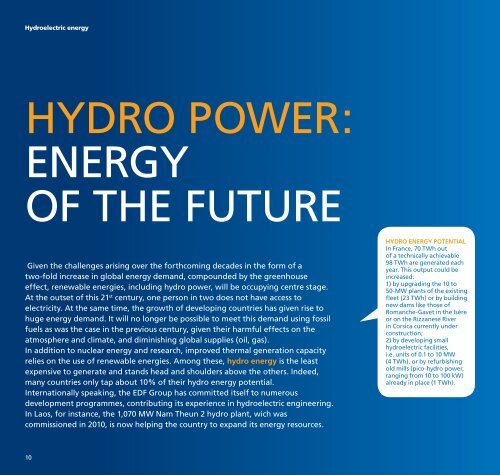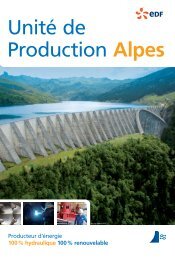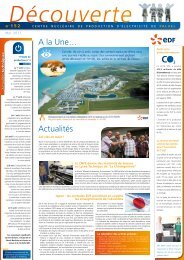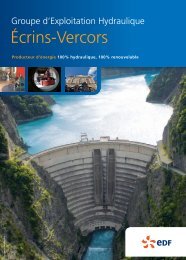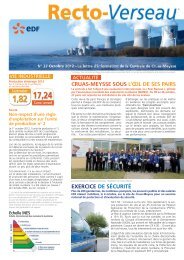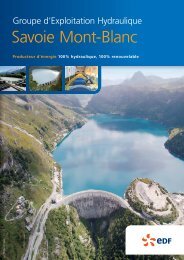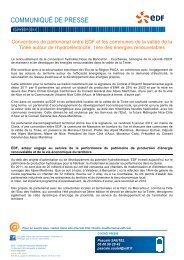Hydroelectric energy - Energie EDF
Hydroelectric energy - Energie EDF
Hydroelectric energy - Energie EDF
Create successful ePaper yourself
Turn your PDF publications into a flip-book with our unique Google optimized e-Paper software.
<strong>Hydroelectric</strong> <strong>energy</strong><br />
HYDRO POWER:<br />
ENERGY<br />
OF THE FUTURE<br />
Given the challenges arising over the forthcoming decades in the form of a<br />
two-fold increase in global <strong>energy</strong> demand, compounded by the greenhouse<br />
effect, renewable energies, including hydro power, will be occupying centre stage.<br />
At the outset of this 21 st century, one person in two does not have access to<br />
electricity. At the same time, the growth of developing countries has given rise to<br />
huge <strong>energy</strong> demand. It will no longer be possible to meet this demand using fossil<br />
fuels as was the case in the previous century, given their harmful effects on the<br />
atmosphere and climate, and diminishing global supplies (oil, gas).<br />
In addition to nuclear <strong>energy</strong> and research, improved thermal generation capacity<br />
relies on the use of renewable energies. Among these, hydro <strong>energy</strong> is the least<br />
expensive to generate and stands head and shoulders above the others. Indeed,<br />
many countries only tap about 10% of their hydro <strong>energy</strong> potential.<br />
Internationally speaking, the <strong>EDF</strong> Group has committed itself to numerous<br />
development programmes, contributing its experience in hydroelectric engineering.<br />
In Laos, for instance, the 1,070 MW Nam Theun 2 hydro plant, wich was<br />
commissioned in 2010, is now helping the country to expand its <strong>energy</strong> resources.<br />
10<br />
HYDRO ENERGY POTENTIAL<br />
In France, 70 TWh out<br />
of a technically achievable<br />
98 TWh are generated each<br />
year. This output could be<br />
increased:<br />
1) by upgrading the 10 to<br />
50-MW plants of the existing<br />
fl eet (23 TWh) or by building<br />
new dams like those of<br />
Romanche-Gavet in the Isère<br />
or on the Rizzanese River<br />
in Corsica currently under<br />
construction;<br />
2) by developing small<br />
hydroelectric facilities,<br />
i.e. units of 0.1 to 10 MW<br />
(4 TWh), or by refurbishing<br />
old mills (pico-hydro power,<br />
ranging from 10 to 100 kW)<br />
already in place (1 TWh).


